Truly blessed to have had darshan at two of the foremost Shaivite and Vaishnavite temples of India, of great significance to any Hindu. As a lover of history too, it was a memorable day for me to have seen two of the renowned and most famous constructions, steeped in history that left me truly amazed. The two marvels I refer to are – 1) Brihadeeswara temple in Thanjavur and 2) Ranganathaswamy temple in Srirangam.
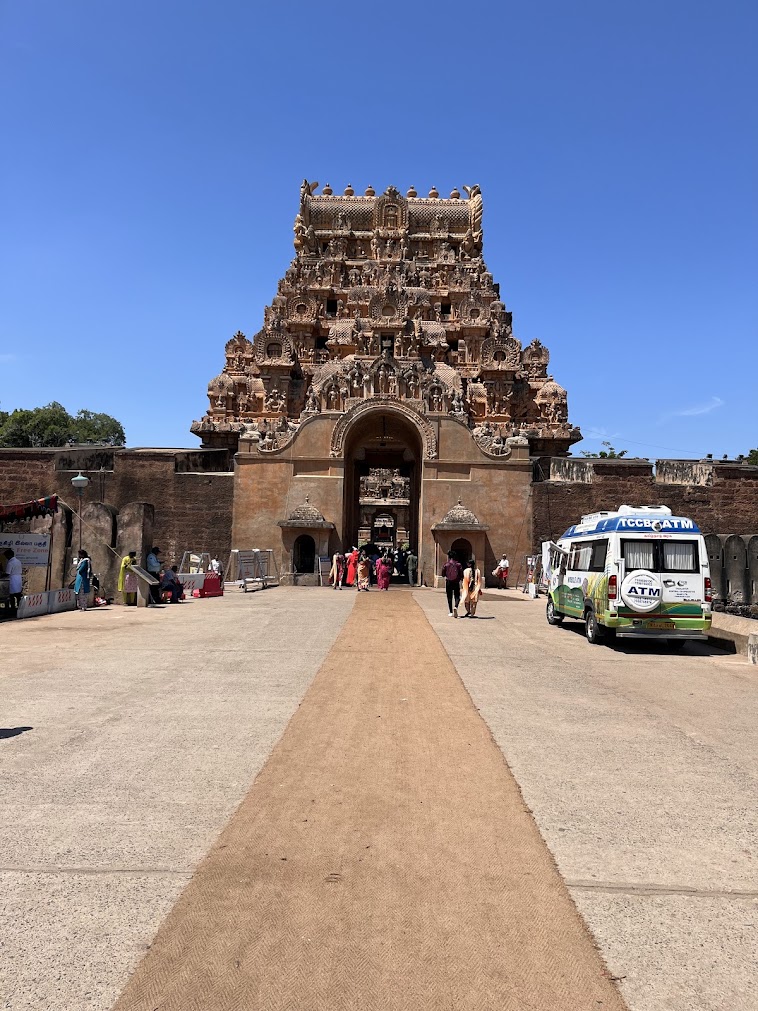
11 AM: We were before the Brihadeeswara temple in Thanjavur. To be more precise, we were at the Keralaanthakan gopuram or tower of the Brihadeeswara temple. The temple is also known as Peruvudayar Kovil, Rajarajeswaram or the most common name in use — Thanjai Periya Kovil (meaning Thanjavur Big Temple). Once upon a time, there was a moat surrounding the outer boundaries of this temple complex but, now it has been filled up. As we walked through the Keralaanthakan gate, we could see the next gopuram, with more intricately carved sculptures –The Rajarajan gopuram.
Some of you may be a trifle confused. The Brihadeeswara temple gopuram we recall was different, much taller and of a different shape. Hold it, this is a standout feature of the Great Living Chola Temples, architecture. Unlike in most temples in Tamil Nadu and southern India, this style of Chola architecture makes the ‘Vimana’ or the tower over the sanctum sanctorum much taller than any of the other gopurams. What you will recall about the Brihadeeswara temple is the picture below:
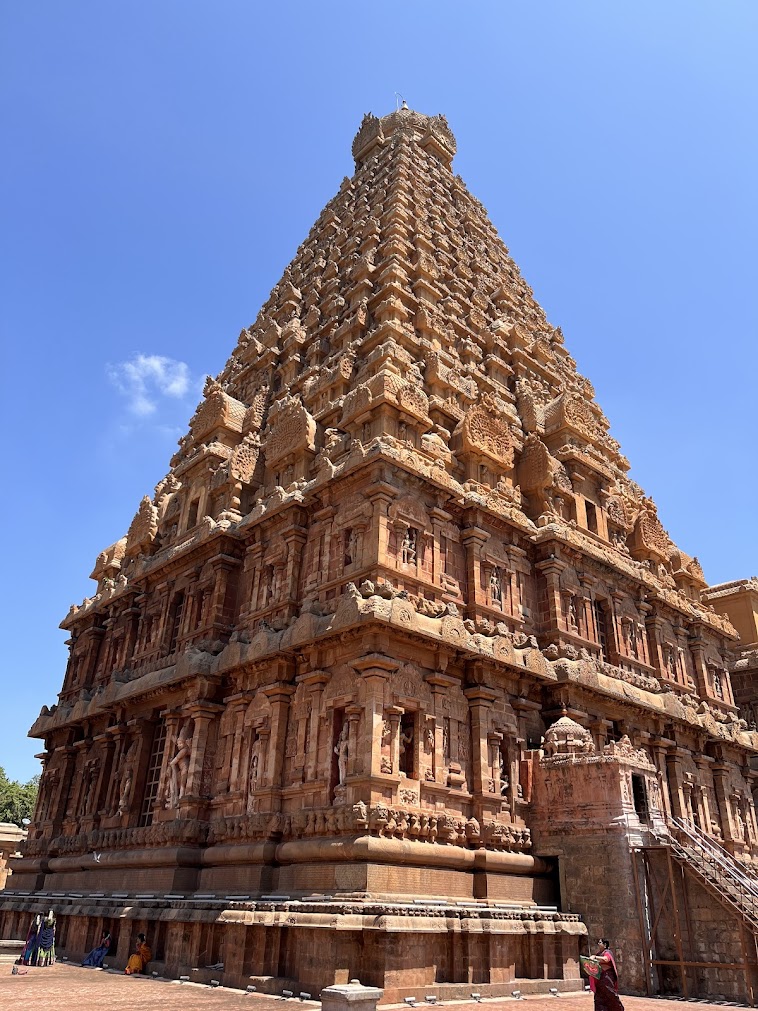
As my eyes first fell on the famous vimana, as we walked through the Rajarajan gopuram, had goosebumps thinking, how Raja Raja I would have strode majestically on this same path and looked upon with pride at this temple he had built in the 11th century.
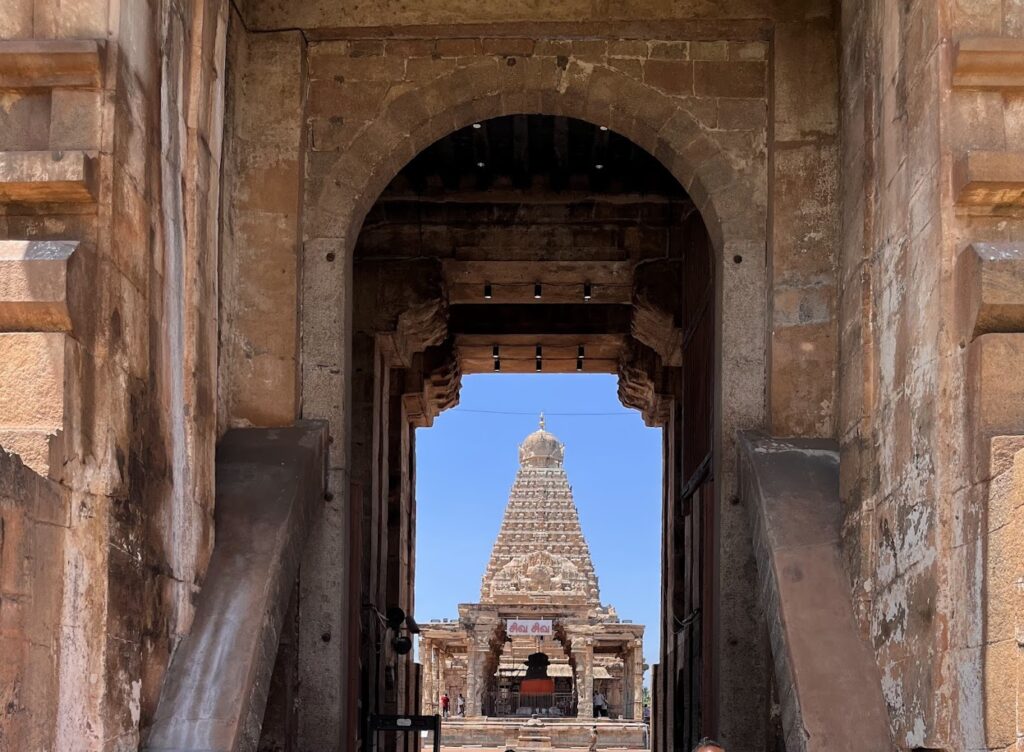
Walking past the massive Nandi, created out of monolithic stone and one of the biggest in India, we climbed a few steps to reach the elevated platform that houses the sanctum with the prominent vimana above it. Photography is strictly prohibited in the sanctum and when we walked into the cool confines after the blazing sunshine outside, I blinked my eyes a couple of times. The inner sanctum was lit up only by the oil lamps and as seen in other Shiva temples, I was looking for the shivling on the floor. It was only then I realised that what I had mistook for darkness was indeed a massive shivling (the biggest I had seen), rising from the floor to a height of 13 feet (I learnt later). Awestruck, paid obeisance as a sense of divinity flowed through me.
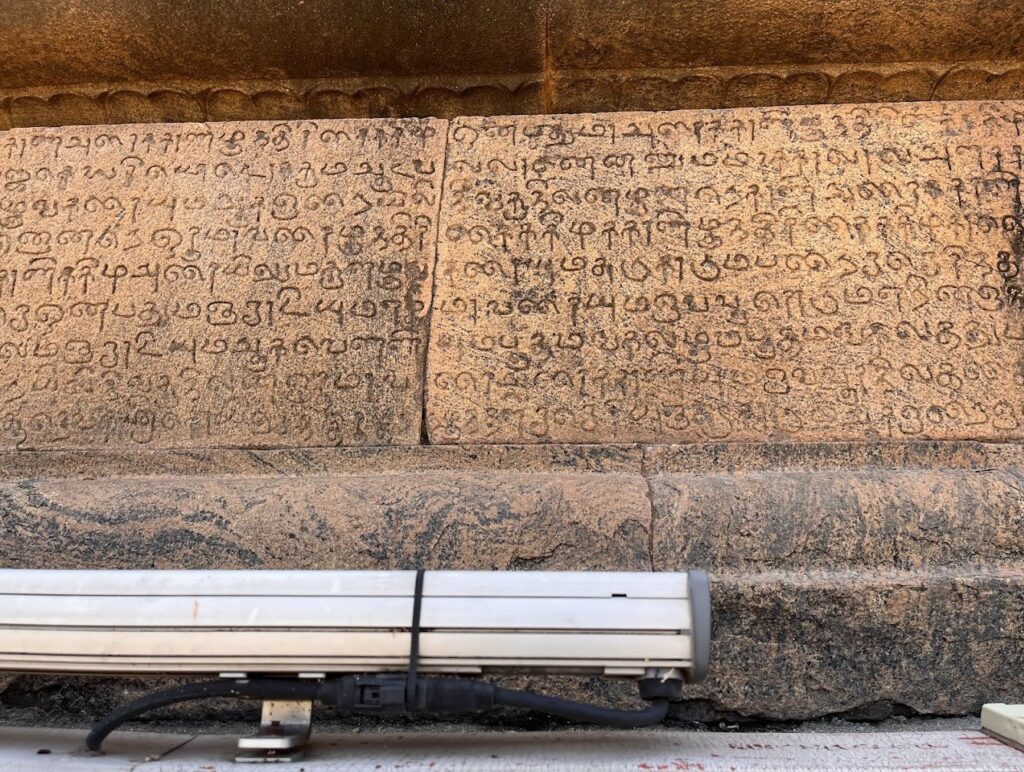
Walking out into the outer prakara, we could see the different pavilions and the amazing sculptures on the temple vimana. The walls carried loads of writing in ancient Tamizh. Historians say that many narrate the history of the temple and eulogise its builders. There are some who feel that there are coded messages that lead to several undiscovered underground passages and possibly large treasures, as well.
Originally built by Raja Raja I in a span of 6 years, there have been demolitions due to raid by Muslim invaders, renovations and additions by subsequent dynasties such as the Pandyas, Vijayanagar rulers and finally the Marathas of Thanjavur. The original construction is truly an architectural marvel, a feat that modern day engineers and logistics operators would not be able to replicate. The entire construction is of granite, with no cement or anything to forge the blocks to together. It is estimated that 130,000 MT of granite must have gone into this construction. Amazingly, granite is/was not available in Thanjavur but had to be brought from further up in Tiruchirapalli district. How were these huge blocks of granite transported to this spot, I wondered? Possibly on the river Kaveri by boats and then dragged by elephants/men on land — Door to door logistics, a thousand years back.
Take another look at the vimana over the sanctum. It is 216 feet in height, with a single piece of granite weighing over 70 MT as the capstone or kumbha. How was such a heavy stone carried up over 200 feet and set in place? The story goes that an incline was created from a village, 6 kilometers away and elephants with human beings dragged the capstone up to its place of rest. The vimana is built in such a way that its shadow does not fall on the temple ground. Phew! Apart from their love for architecture, the Cholas were brilliant engineers too, I realised. No wonder this is UNESCO World Heritage site and one of the three Great Living Chola temples (Read my blogs on Great Living Chola Temple at Darasuram and Great Living Chola Temple at GKC)
We walked across to the shrine of Brihadeeswara’a consort, Parvati worshipped here as Periya Nayaki or Brihannayaki.
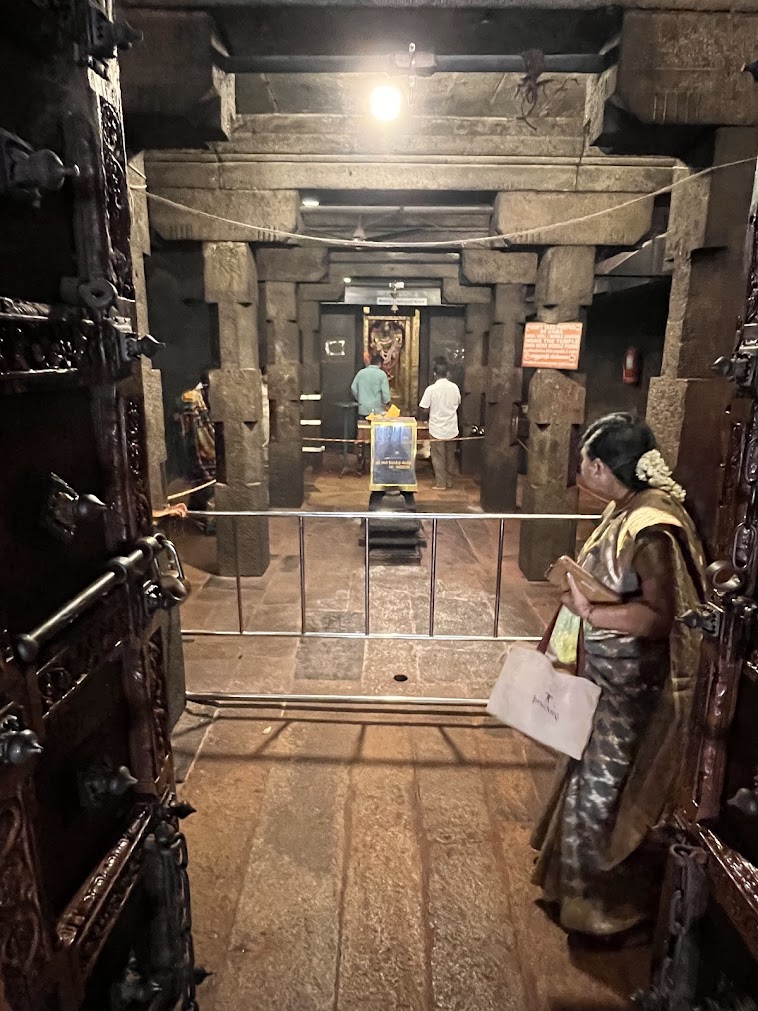
Time to have a closer look of the massive Nandi, that is 16 feet in length and 13 feet in height and, carved out of a single stone.
As we walked out of this piece of history, my daughter called to say that under lights in the evening, the temple looks even more imposing. We could not wait for the evening and had to make do with a couple of snaps sent by her.
A 65-kilometer drive from Thanjavur and we were in our homestay on the island of Srirangam, A part of the city of Tiruchirapalli, Srirangam is an island encircled by the Kaveri and Kollidam rivers. Rising high above the surrounding greenery, we could see the Raja Gopuram or the largest temple tower of the Ranganathaswamy temple, that we had come to visit.
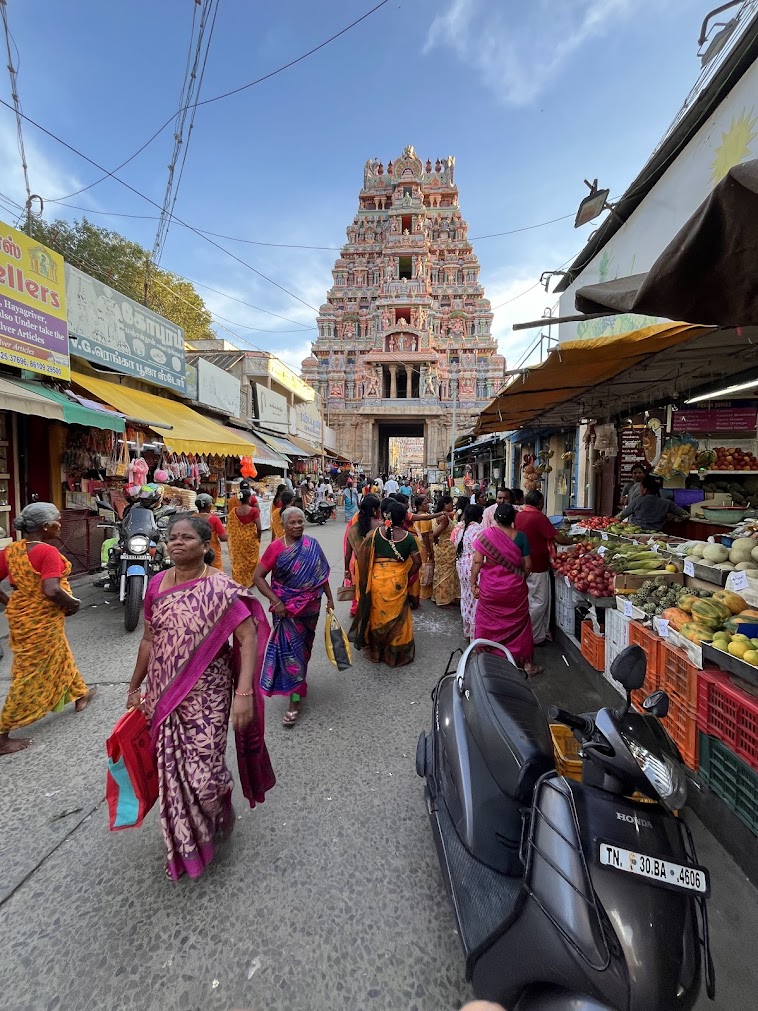
3.30 PM: We were in front of the Raja Gopuram, the tallest temple tower in Tamil Nadu. The whole temple town or town temple is built in seven concentric rectangles. The outermost one, as one goes through the Raja Gopuram, has shops and business houses, the commercial part of the town and where vehicles are allowed to ply. The next gopuram leads to the second rectangle where the priests and other temple dignitaries have/had their residences. The next five rectangles are the ones which form the actual temple compound and where you are supposed to walk barefoot. The last or the seventh rectangle is the sanctum sanctorum where reclines Lord Vishnu as Ranganathaswamy.
What hits you instantly is the sheer size of the temple complex. It is truly massive. No wonder for the elderly and differently abled people, they have buggy services that transport you from one shrine to the other, apart from there being wheelchairs, as well. The Ranganathaswamy temple is the largest functional temple in the world beating the likes of Angkor Vat in Cambodia and Borobudur in Indonesia. This temple has been submitted for inclusion as an UNESCO World Heritage site and the application is pending. 21 gopurams, 50 shrines dedicated to various Gods and saints, long pillared halls/corridors, 9 tanks for storing water and huge granaries display that this was once, a self-contained township, in itself. It is the first among the 108 Divya Deshams, that the Vaishnavites hold sacred.
The age of the temple? Well, it figures in the Ramyana and Puranas but the temple itself is estimated to have been built during the Sangam period i.e. 1st century CE. The early Cholas, the Pandyas, the Hoysalas, the Nayaks, the Vijayanagar kings and even some from Odisha have contributed to the expansion , renovation and rebuilding of the temple complex. Ravaged and looted by the Muslim invaders, the main deity had to be hidden carefully and then restores when the invaders were beaten. The last of the construction was by the Ahobila Mutt and the Tamil Nadu HRCE of the Raja Gopuram in 1987. Though the foundations had been there for years, it was only in 1987 that the tower was finally built with donations pouring in from many celebrities.
Legend has it that during Samudra Manthan, Lord Brahma took possession of the Srirangam Vimana which came up with the churn. It remained with him till he handed it over to King Ikshvaku of Ayodhya, one of the ancestors of Rama. When Rama came into possession of the vimana and idol, he gave it to his trusted friend Vibhishana who wanted to carry it and install it in his native Lanka. While carrying it and resting at what is now Srirangam, en route to Lanka, the vimana would not move from this place. So Vibhishana entrusted it to the local king Dharmavarma, who consecrated the temple here with the idol of Ranganatha Swamy in reclining position, facing south to forever bless Lanka. Moreover, we could see a separate shrine for Vibhishana inside the temple complex.
There was a long queue for darshan of Ranganathaswamy. We opted for the special darshan and moved inside the ancient sanctum sanctorum. The first sight of Maha Vishnu as Ranganathaswamy, lying in a reclined position atop the coils of Adiseshan is truly spell-binding. The idol as seen in the light of two lamps lit with ghee, evokes divinity. Only the head and the center portion of the Lord is visible. ‘What about the legs and where are Sridevi and Bhoodevi?’, asked my wife. The priest’s response was that the door through which one could see the feet of Ranganathaswamy would be opened only during festive times, such as Diwali. Moreover, he added, Sridevi and Bhoodevi are not present with the idol. You can well imagine the size of the idol, if He has to be seen through multiple doors. In front of the main idol, is a bronze idol of Vishnu in standing posture, We were told that this idol was used when the original idol was stolen/had to be hidden from invaders.
After the darshan, feeling fulfilled, we stepped out to visit the shrines of Dhanavantri, Ranganayaki and Garuda apart from admiring the sculptures on view. If one were to take a leisurely excursion of this historical marvel, I opine it will take at least two days. There are conducted tours inside the temple that would show you all the important shrines, sculptures, paintings, apart from detailing their history.
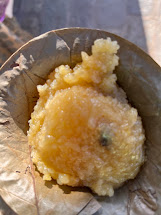
Piping hot ‘Sakkarai Pongal’ dripping in ghee and jaggery as prasad, filled our hearts and stomach, apart from tickling our taste-buds.
Passed the shrines of different forms of Vishnu, apart from that of many Vaishnavite saints, prominent one being of Saint Ramanujacharya, whose mortal remains are kept preserved here for over 1000 years, right behind his idol. In seated position, the mortal remains are kept intact simply by applying camphor and vermillion, twice a year. Many Indians visit Egypt and come back amazed at the mummies, do visit Srirangam to witness the Indian science and art of preserving the dead.

As mentioned earlier, the temple complex has 21 towers or gopurams and, there is a small terrace from where one can get a 360 degree view of all the 21 gopurams. A small charge of Rs.50 is levied and once can go up to the terrace. Oh! What a view! On the north-south axis, one can see 12 gopurams in a line, that includes the golden vimana. On the eastern side, one can see a gopuram painted white, popularly called ‘Vellai gopuram’ or White gopuram. learnt that it was originally called ‘ Vellayi gopuram’, that got corrupted to Vellai gopuram. Vellayi was a devadasi (temple dancer), who in the face of Muslim invasion, danced before the invading troops, so that the Ranganatha idol could be spirited away to safety. She then took the leader of the invaders to the top of this temple tower and pushed him down to his death, before jumping off the tower herself. Yes, the peaceful Srirangam of today has had a gory past with multiple invasions and thousands of Vaishnavites getting killed.
A memorable day — Tired but fully satisfied that we had seen two major religious centers and two historical marvels in a single day.
Discover more from BalasBroadcast
Subscribe to get the latest posts sent to your email.




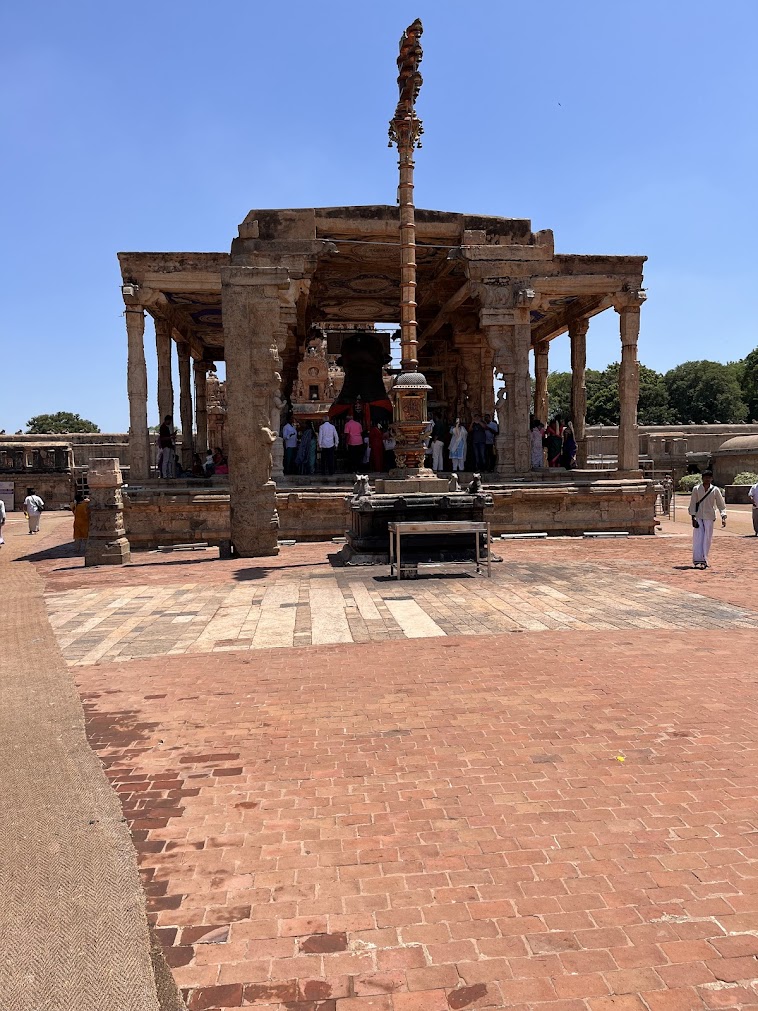
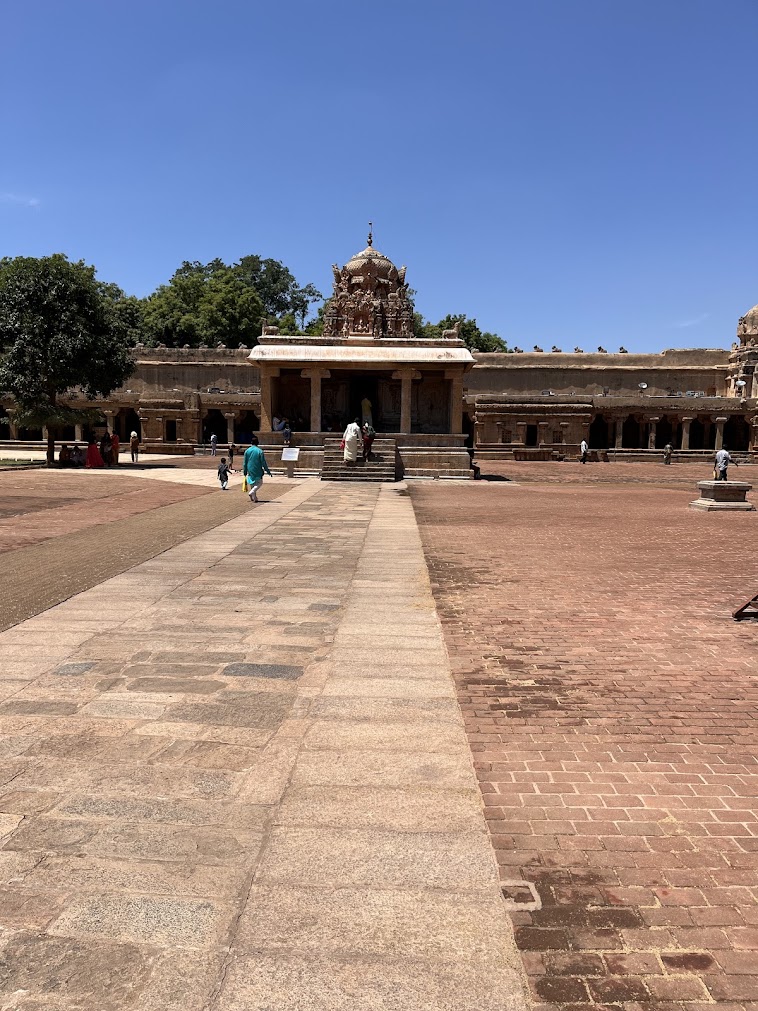
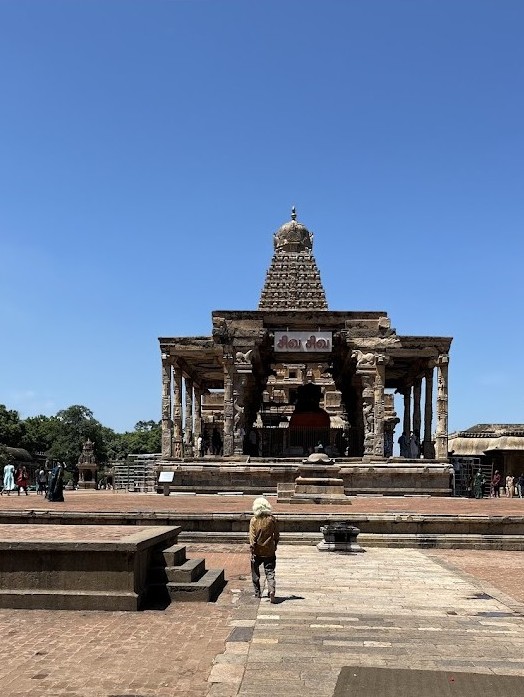
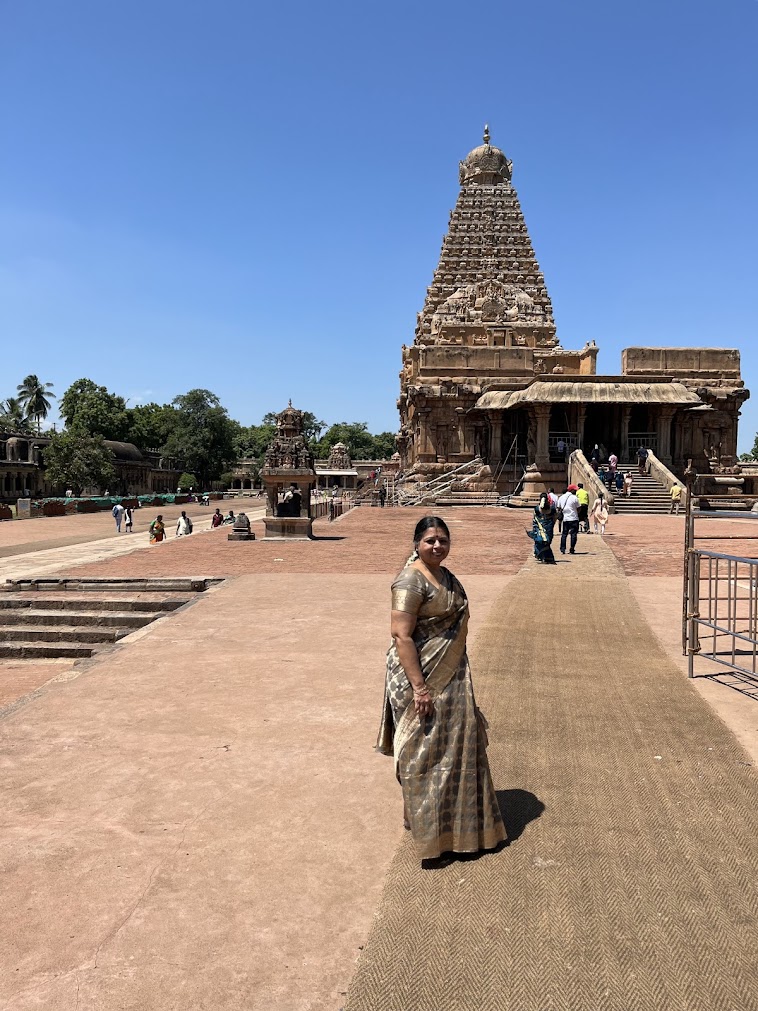
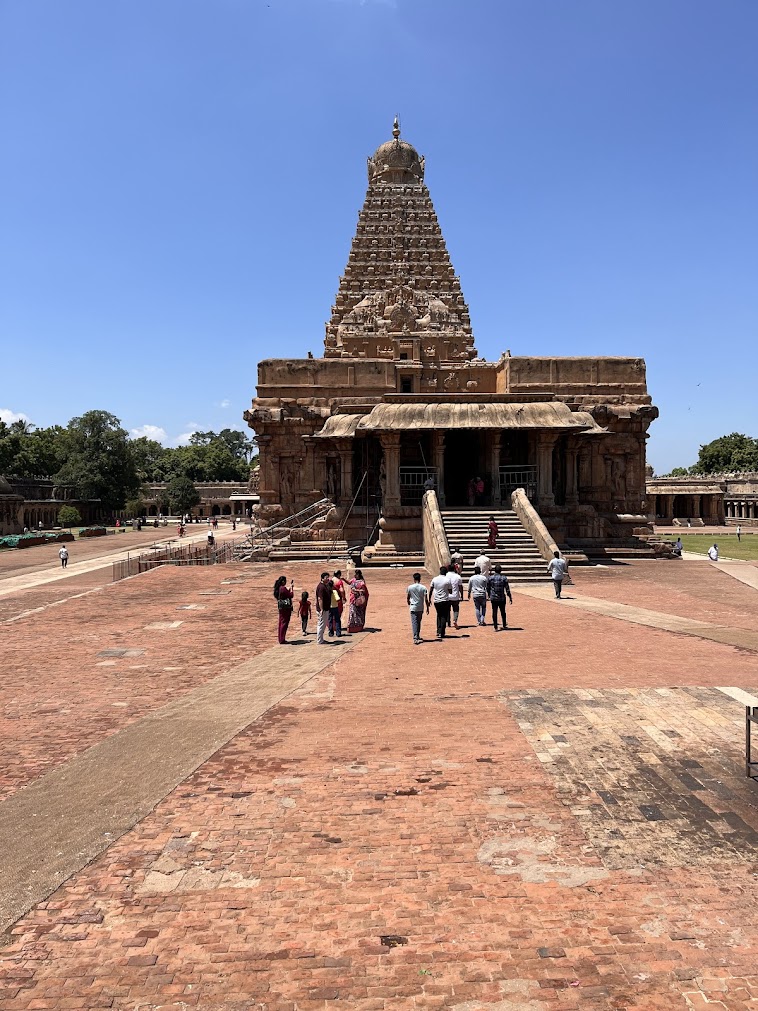
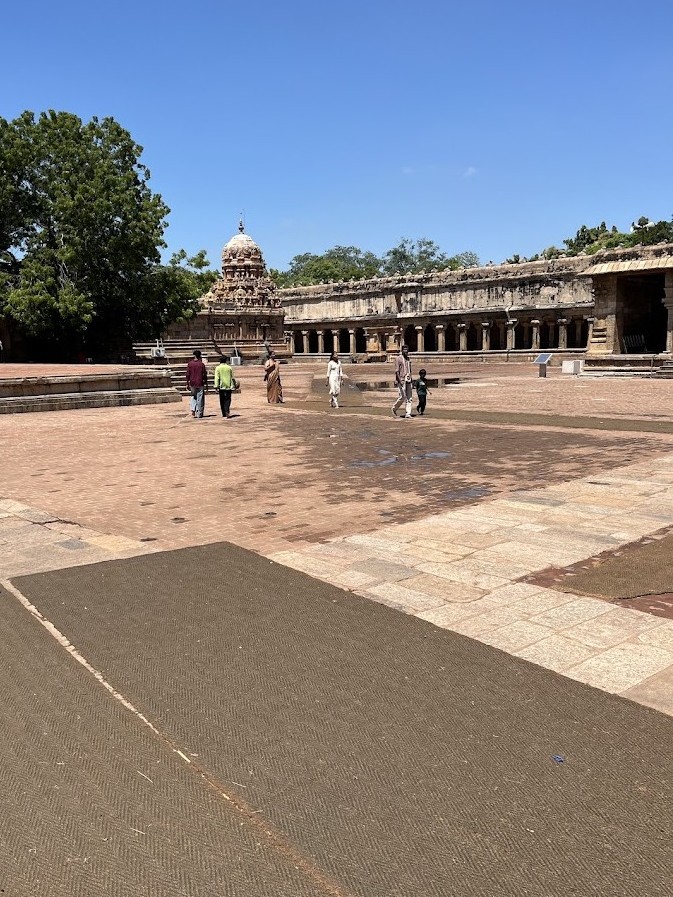


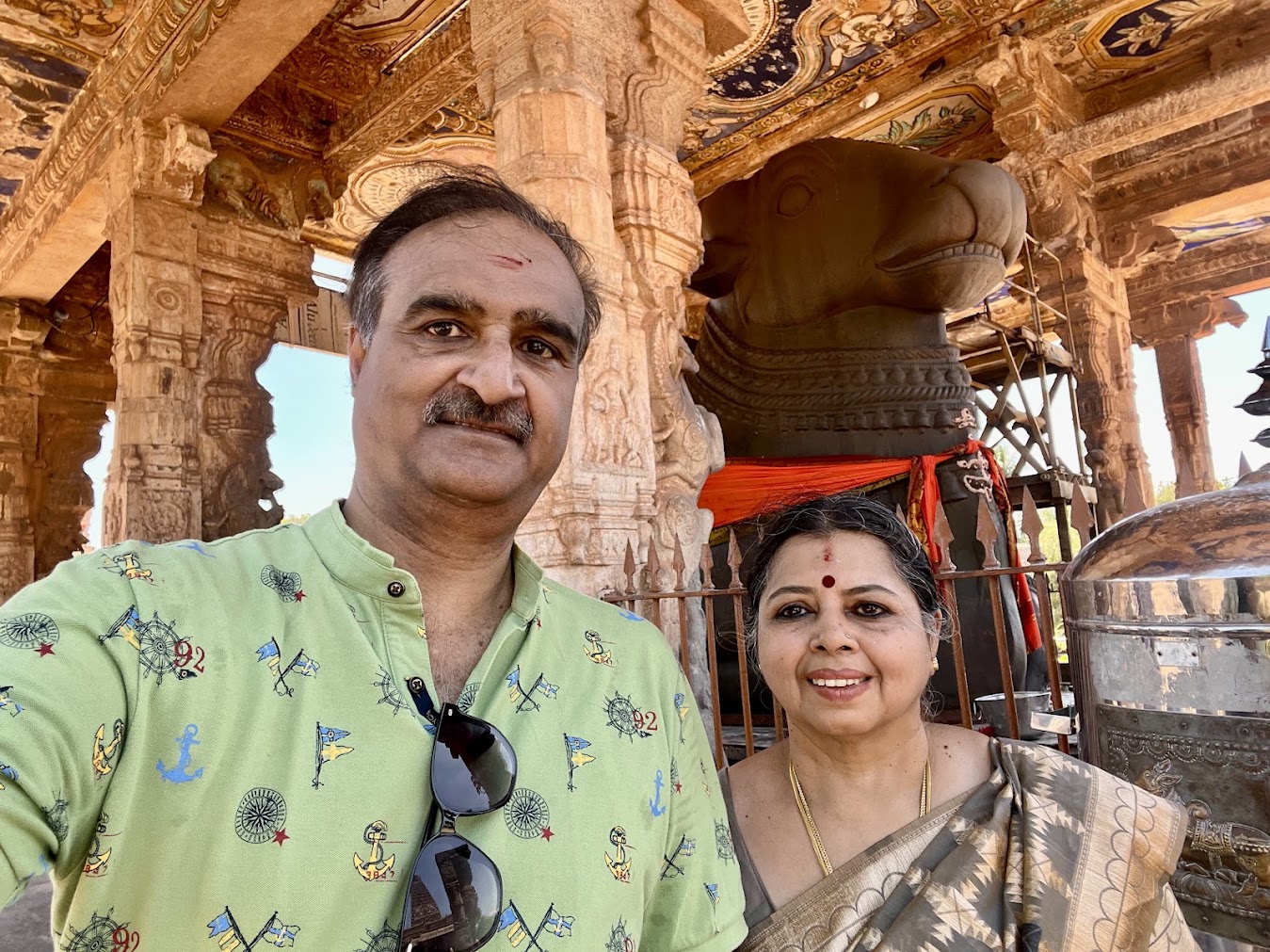



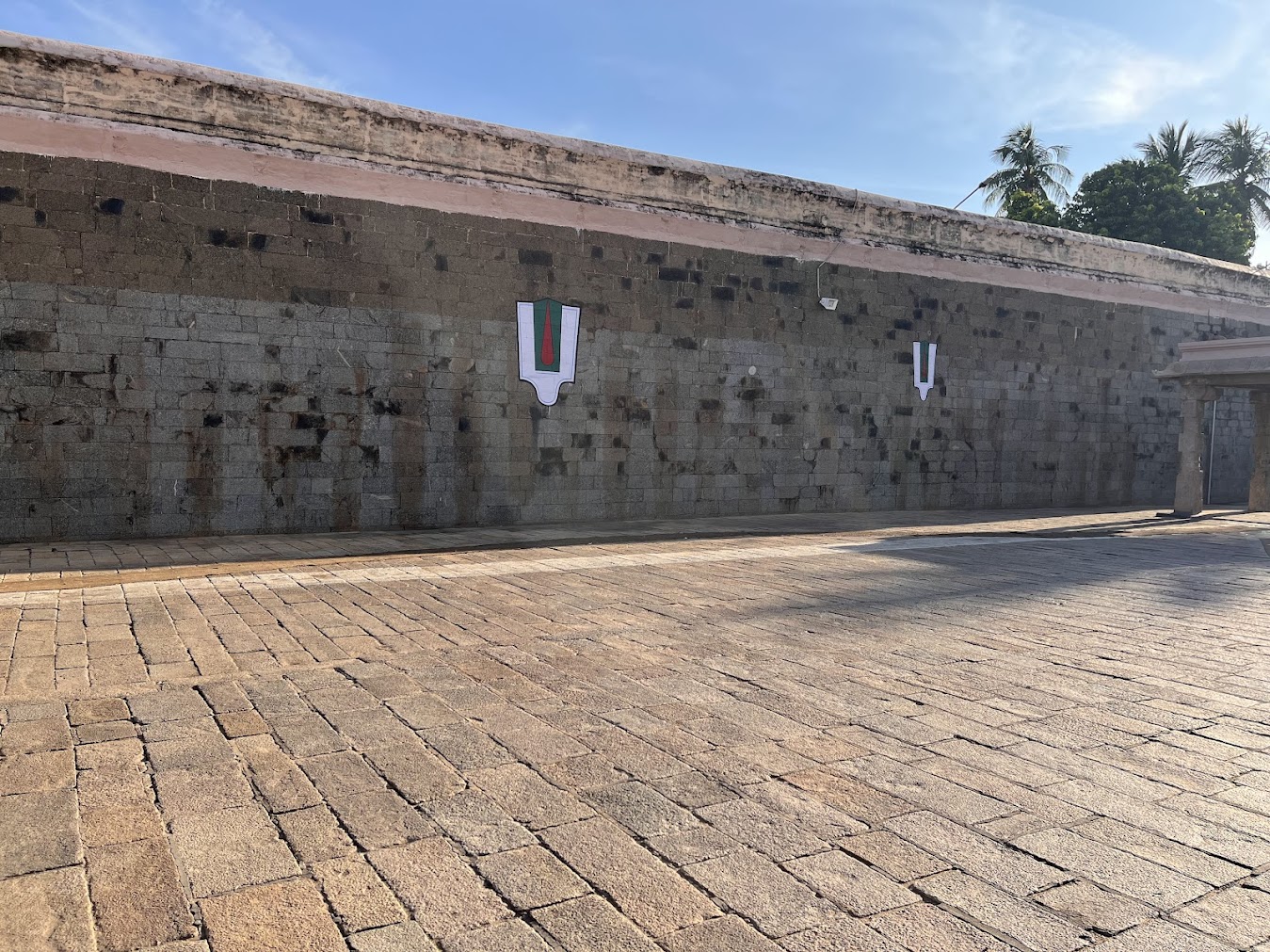





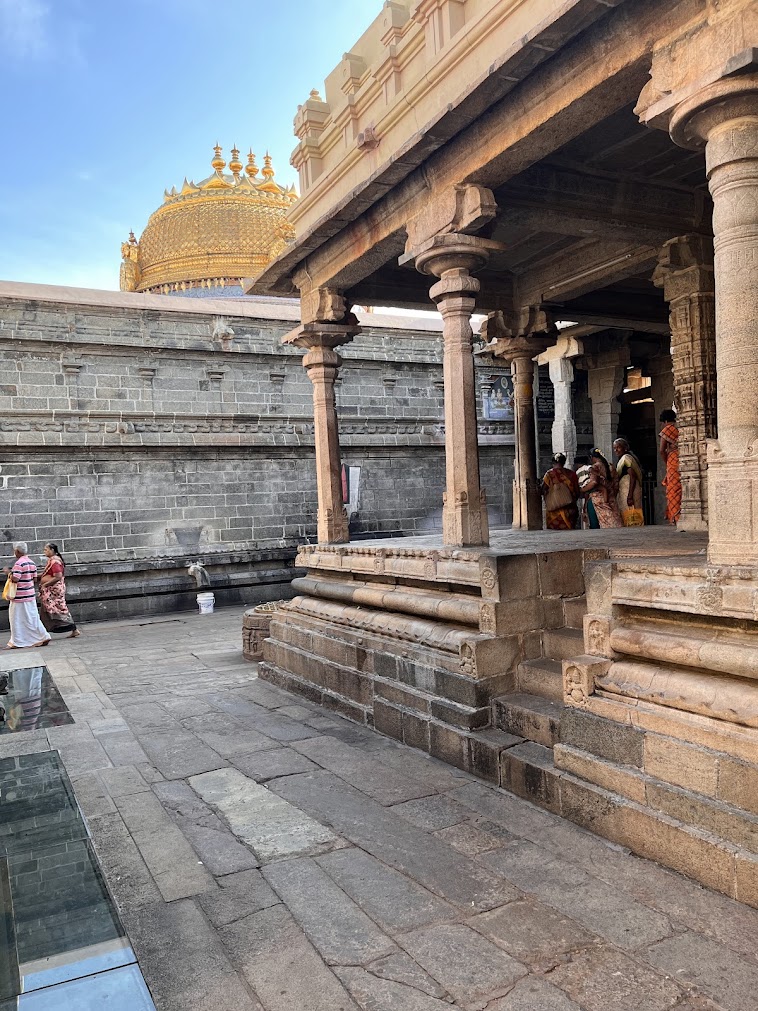
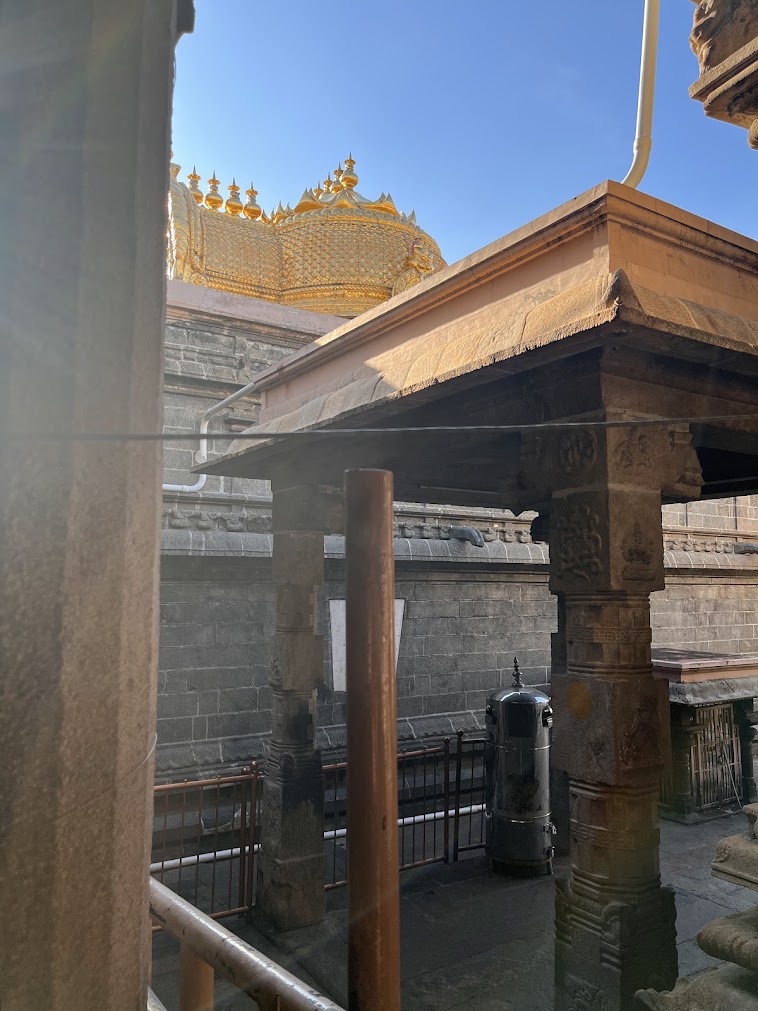
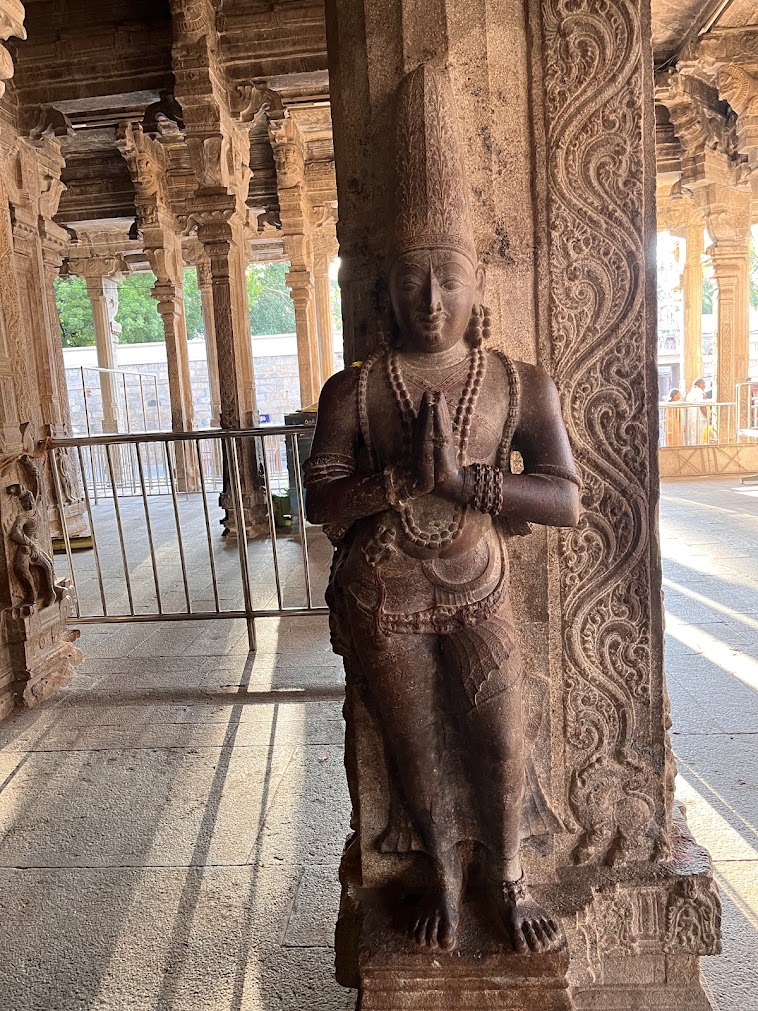

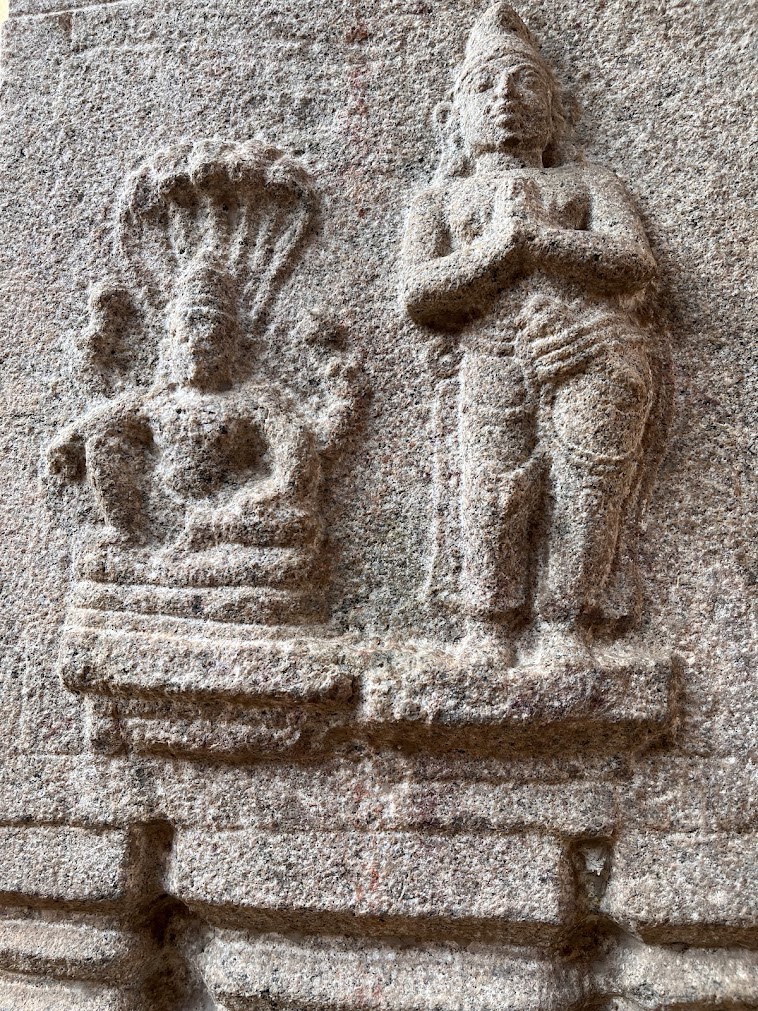
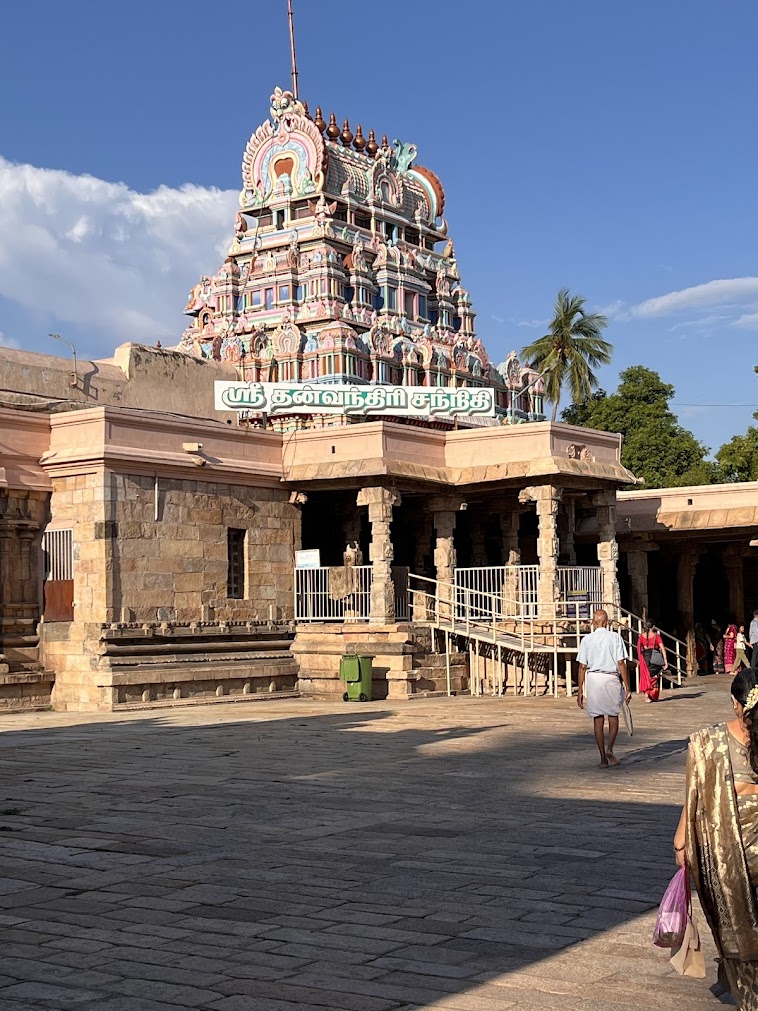
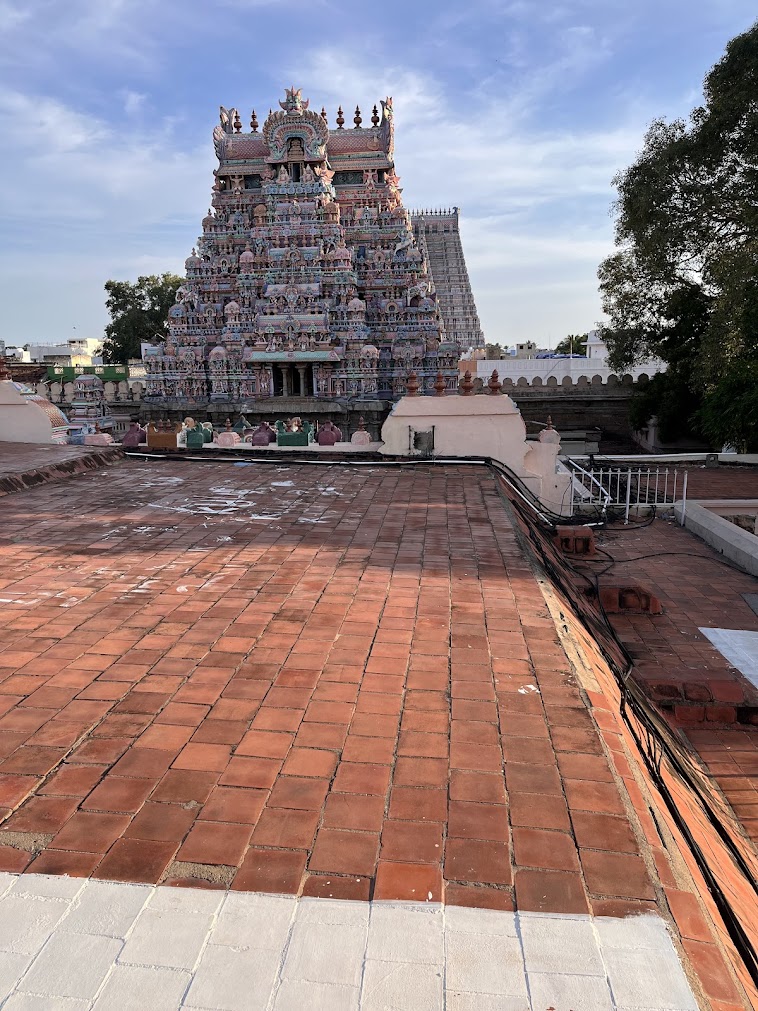

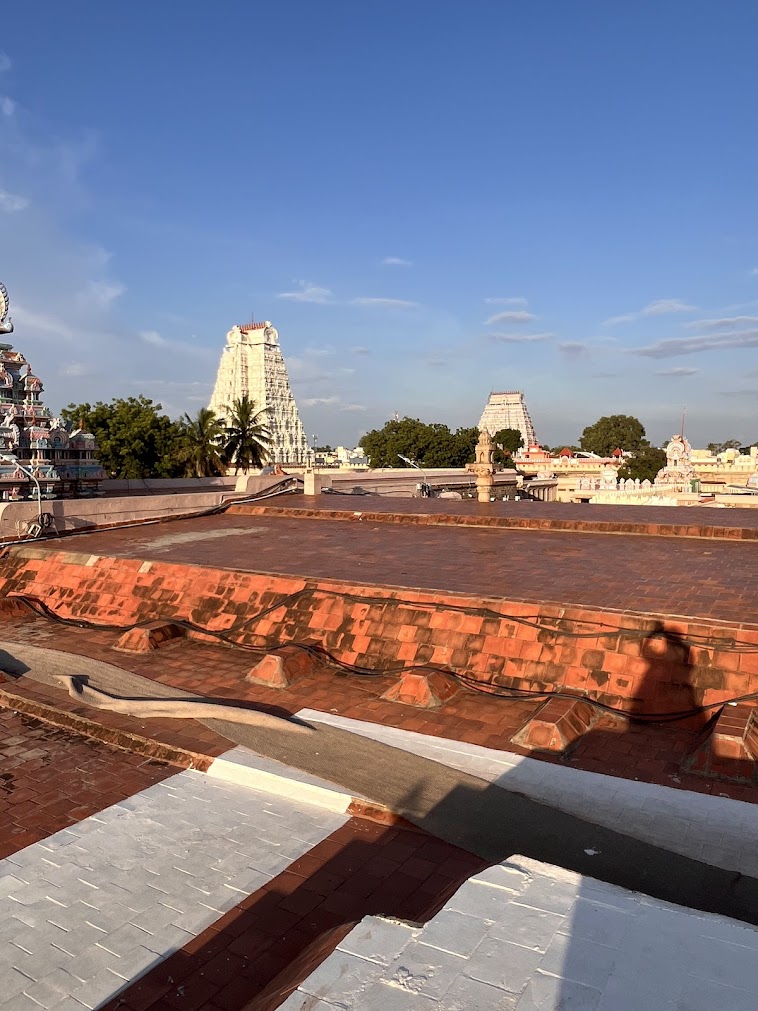
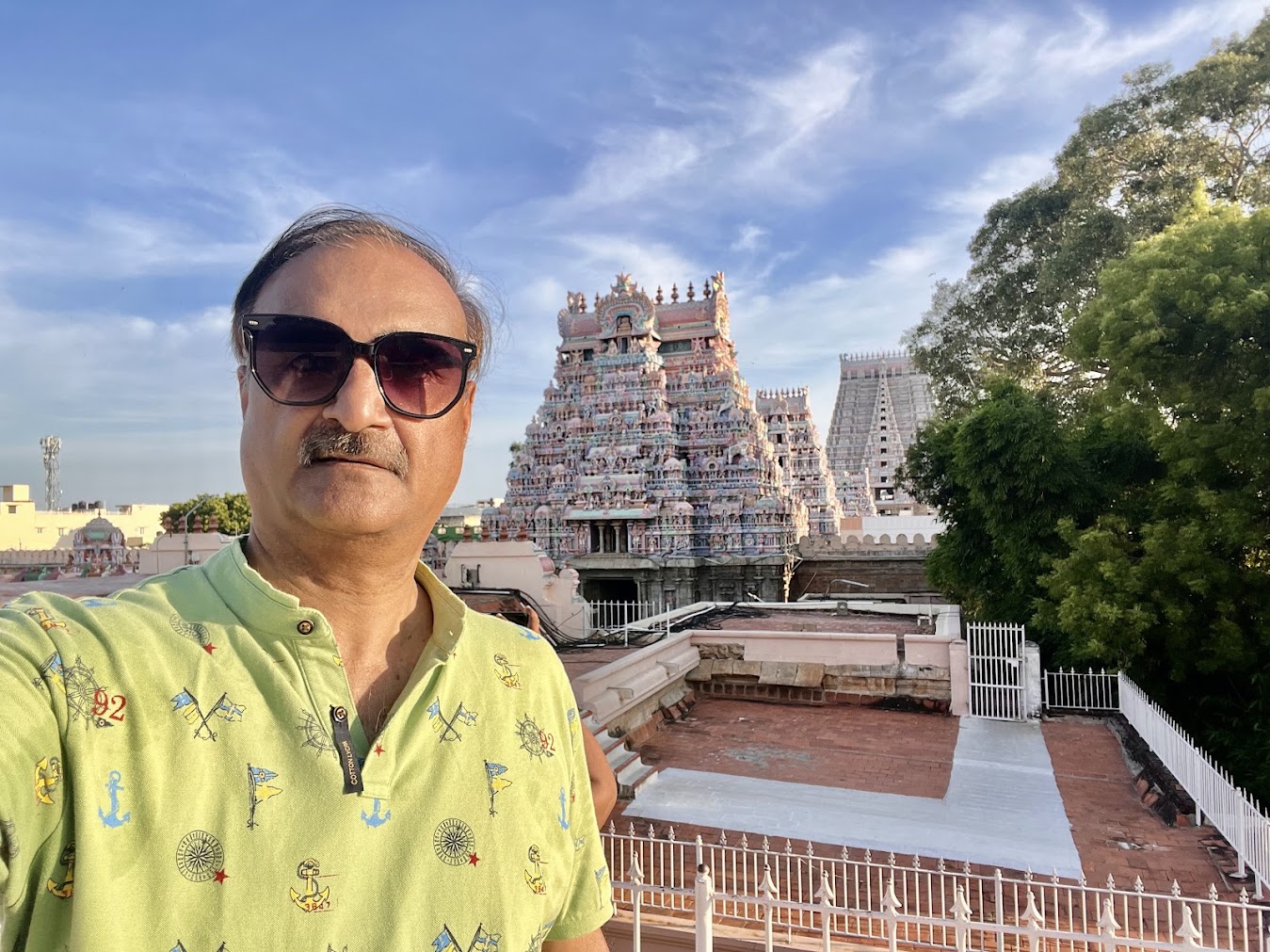


Very informative article! Much appreciate.
🙏
Both the places on my wish list… hope to do the same soon. Thanks for sharing the beautiful blog.
You must visit at leisure to soak in the history
Suggest you see all the 3 Great Living Chola temples in one go
Very detailed description and a good insight into history.
Nice Bala. Visited Srirangam after a long gaps just last month and this was like a replay of the visit!
Blessed.
Memories rewind.
Dharshan always gives peace and happiness.
Wish to read more….and enjoy sir.